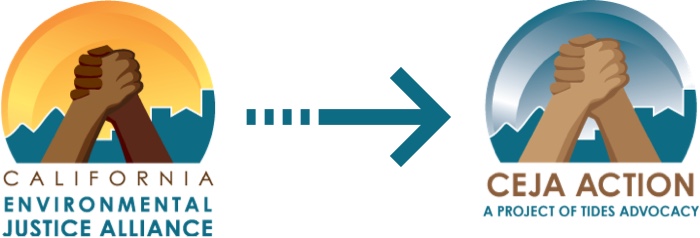Bringing Solar to Affordable Housing: Energy Savings and Local Jobs
The renewable energy revolution is on the rise in California with a significant increase in our use of solar power and other renewable energy. There’s also been a lot of discussion about the barriers of accessing rooftop solar in the communities that need it the most.
Most low-income communities and communities of color are renters and don’t have access and are not able to benefit from this renewable energy revolution. In order to achieve energy equity, we need to ensure that low-income renters residing in multifamily housing have access to the same opportunities to directly benefit from the expansion of renewable energy in our state.
California’s newest solar program for low-income renters, the Solar on Multifamily Affordable Housing (SOMAH) program, will bring $1 billion in rooftop solar to low-income renters over 10 years. The new program is intended to fund 300 megawatts of new solar projects with the potential to serve over 150,000 low-income renters at over 2,000 affordable housing properties across the state.

The SOMAH program is the final result of AB 693 by Assemblymember Susan Eggman, a bill that CEJA proudly co-sponsored and helped pass in 2015. It is the nation’s biggest solar program for low-income renters in history and the first one to direct a majority of the savings created through use of solar energy directly back to the utility bills of renters. We applaud the leadership of the CPUC in ensuring cost-savings for low-income tenants and promoting meaningful investments in disadvantaged communities.
Environmental justice communities and low-income renters have the most to benefit through savings on their utility bills and must be included in this growing renewable energy revolution in California. The challenge of installing solar panels on any multi-unit building is far greater that on a single-family home, especially for a building housing low-income tenants. Current programs only provide savings to the building or homeowners. With the rental market being a significant barrier, SOMAH is a huge step to solving one of the biggest pieces of the problem.
What are some key benefits of SOMAH?
- Closes the “green divide”: Renewable energy projects are usually located in desert areas or in affluent areas far away from communities that need it the most. EJ communities experience a “green divide” where these communities usually do not see the renewable energy in their communities nor do they get the jobs and economic benefits from renewable energy. SOMAH will help close this green divide by putting renewable energy right where it’s needed the most – on tenants’ rooftops.
- Reduces pollution, fights climate change: Low-income communities and communities of color have the highest rates of pollution and suffer from the highest rates of pollution-related illnesses such as asthma and cancer. These communities are also hardest hit by climate change as they lack the resources to adapt. SOMAH will help our state shift from dirty energy to renewable energy, which reduces pollution that causes climate change while investing in communities that need the renewable energy the most.
- Reduces energy bills: Low-income households across the U.S. pay up to 25% of their incomes alone on utility bills. Low-income households in California have an average energy burden that is 2.5 times higher than moderate and high-income households. Under SOMAH, low-income renters would be credited with a portion of the energy produced on the roof of their apartment complex, which would reduce their monthly utility bills and put extra cash in their pockets to spend on other basic needs. The program is designed so that tenants must receive, at the very least, more than half the electricity savings benefits when building owners participate in the program to secure rooftop solar.
- Local clean energy jobs: Unemployment and underemployment is highest in low-income communities and communities of color. SOMAH will help generate new local clean energy jobs in these communities and build a thriving local economy by providing job training to transition workers to clean energy jobs.
What are the next steps in implementation?
Key to the success of the SOMAH program will be a statewide Program Administrator, whose leadership will shape how the program protects tenant benefits and connects Californians to clean energy jobs. The PA will help establish the program-wide energy savings and participation target, provide streamlined access to incentive programs for energy efficiency and energy storage, adjust incentive levels to align with current solar costs specific to multifamily affordable housing, evaluate participation over time to ensure that incentives remain appropriate for eligible properties throughout the state, and develop effective local hiring strategies.
We urge the CPUC to hold an inclusive and transparent selection process for this position and we look forward to working with a statewide PA to make the goals of SOMAH a reality for low-income tenants in environmental justice communities. The PA will be appointed by April 30, and continue working with CPUC to finalize SOMAH’s program guidelines by August 30.
SOMAH is a win-win for California by demonstrating that we can meet the challenge of climate change, invest in communities most impacted by fossil fuels, create economic benefits for low-income tenants, and ensure that our renewable energy future puts equity at the center. Low-income communities and communities of color need to see the environmental and economic benefits of equitable, clean, renewable energy, and they should be first in line for local clean energy and good jobs.
We are one step closer to seeing the multitude of benefits from renewable energy for residents living in affordable housing and one step closer to meeting our state’s clean energy goals. California can only meet its renewable energy goals by ensuring that families living in affordable housing can access these resources. CEJA is committed to seeing an equitable implementation of the program as the process moves forward and will continue to engage in the process to ensure the program serves our community needs.

